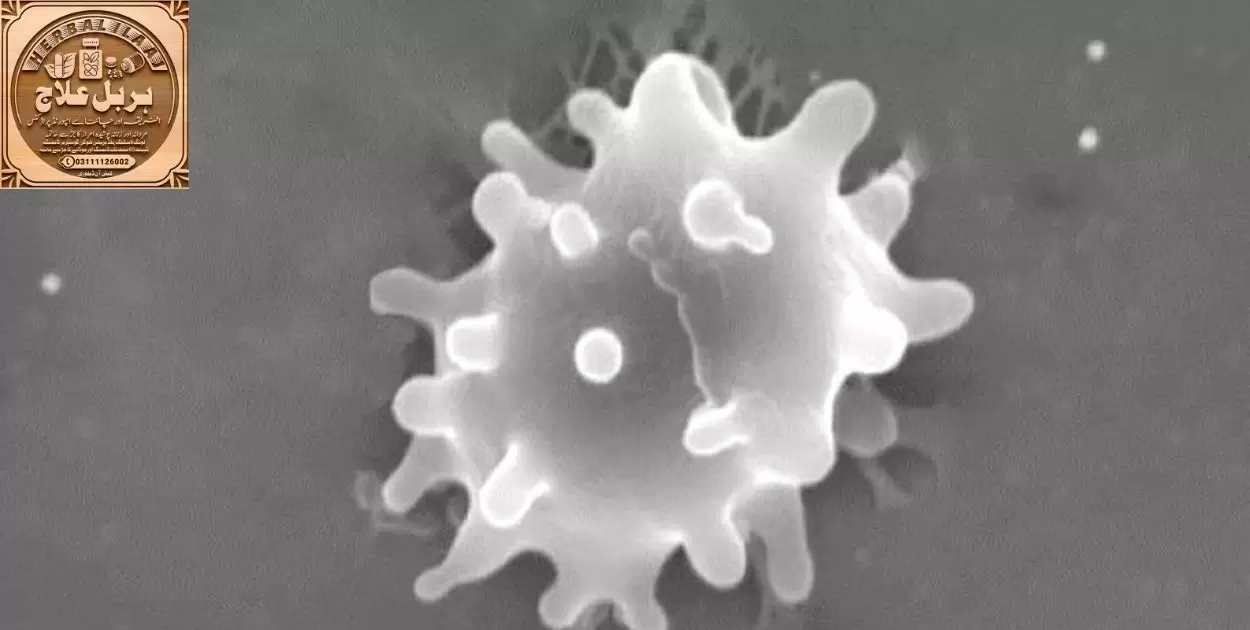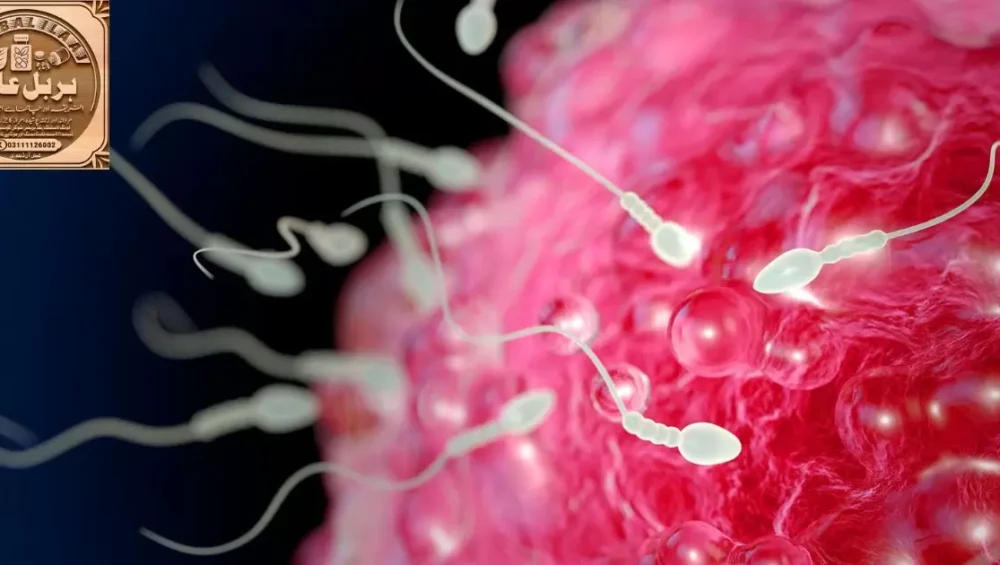Pus cells in sperm refer to white blood cells found in semen. A small number of white blood cells are normally present in semen and found around sperm. These pus cells help to protect the sperm and maintain a healthy environment.
How much pus cells in sperm is considered normal amount? Many men wonder about this issue and want to know if the level of pus cells they see in their semen is cause for concern. The number of white blood cells present can sometimes provide insights into a person’s reproductive health status.
A normal amount of pus cells in sperm is said to be less than 1 million white blood cells per milliliter of semen. Higher levels may indicate the presence of an infection or other issues affecting the genital or reproductive system. Checking for abnormal levels of pus cells is part of a semen analysis that doctors may recommend for fertility or related health concerns.
Does Sperm Contact With Pus Cells Cause Infection?
Sperm routinely encounters white blood cells in the male reproductive tract. Pus cells help fight infection and clear any harmful bacteria. A certain amount of contact is normal and does not necessarily lead to illness. However, too many white blood cells could mean the body is fighting an infection in the genital area.
If pus cell counts are elevated, infection is possible. Bacteria or viruses in the urethra or prostate may cause more white blood cells than usual. Contact alone between sperm and these defensive cells does not usually cause disease. But high white cell levels could signal an underlying condition needing treatment.
Sperm Interact With White Blood Cells
Sperm and pus cells both help maintain male reproductive health. White blood cells protect the testes and sperm from microbes that could damage fertility. Sperm, in turn, does not generally provoke an immune response from these infection-fighting cells.
Their interaction is mostly harmless. White blood cells eliminate any pathogens near sperm so they can complete their functions unimpeded. If no infection exists, white cells ignore the sperm and allow it to travel normally out of the body. Only unusually high pus cell amounts may affect sperm activity.
Sperm Kill Pus Producing Bacteria

Sperm has natural antifungal and antibiotic properties to defend itself. As it swims out of the male body, sperm encounters various microbes near the urethra. Many types that could infect pus cells tend not to survive exposure to seminal fluid.
The environment in semen helps keep bacteria and pathogens from multiplying. Sperm’s internal substances have mild disinfecting abilities to eliminate mild microbial threats near white blood cells. This protects both cell types and keeps the reproductive system predominantly germ-free.
However, sperm alone cannot clear very strong bacterial overgrowths. Pus cells are still needed to aggressively combat severe infections through inflammation. Sperm supports but does not replace the immune defenses provided by white blood cells in the genital region.
Immune Responses Of Sperm To Foreign Bodies
| Antigen | Immune Response | Purpose |
| Bacteria | Sperm increase production of reactive oxygen species (ROS) to fight bacteria. | ROS act to directly damage bacteria and prevent infection. |
| Viruses | Sperm secrete antiviral proteins to block viruses from entering and replicating. | Stopping the spread of viruses protects sperm from degradation. |
| Dead or damaged sperm | Healthy sperm engulf and phagocytose dead/damaged cells. | Cleaning up debris supports sperm motility and survival. |
| Cancer cells | Sperm release natural killer cells to eliminate any cancer antigens. | Destroying cancer safeguards sperm DNA and structure. |
| Foreign particles | Sperm trap and remove dust, toxins or chemicals from female tract. | Clearing unwanted materials maintains optimal conditions. |
In summary, sperm have innate immune functions to protect themselves from a variety of foreign threats they may encounter. This keeps the semen environment suitable for fertilization.
What Is The Normal Percentage Of Pus Cells In Semen?
Most experts agree that less than 1 million white blood cells per milliliter of semen is a normal level. This equates to about 25% or less white blood cells out of the total cell count observed microscopically. Higher numbers could mean inflammation.
White Blood Cells Are Considered Normal In Sperm
Under 5 million white blood cells per full ejaculate is considered a typical count by multiple studies. This works out to less than 1 million per milliliter of fluid. Levels between 1 to 5 million are usually not linked to fertility problems on their own.
Level Does Pus Indicate Infection In Sperm
Generally, 1 million white blood cells per milliliter of semen or more is taken as a sign of possible infection requiring further investigation. Counts over 5 million per full sample reliably point to existing genital inflammation or infection in the urinary tract.
Reference Ranges For White Blood Cell Counts In Semen
Reference ranges may differ slightly between laboratories but most put the typical white blood cell limit at 1 to 25 million per full ejaculate. Levels above this are abnormal and necessitate checking for underlying causes like infections, illnesses, or anatomical defects.
Can Pus Cells In Sperm Affect Fertility?

Pus cells in sperm, also known as leukocytes, are white blood cells that help fight infection. A small number is normal but a high count can be a cause for concern. When leukocytes are too numerous it could impact sperm health and fertility. The extra cells take up space and resources meant for sperm. This makes it harder for sperm to mature and function properly.
A high leukocyte count may also be a sign of inflammation or infection in the genital tract or testes. Such issues could damage delicate sperm tissue over time. It is important to see a doctor if a semen analysis shows unusually high levels of pus cells to check for an underlying health problem and seek treatment. Getting any infections addressed could help protect sperm quality and a man’s ability to father a child naturally.
High White Cell Count Impact Sperm Functioning
Too many white blood cells or leukocytes in semen can disrupt normal sperm activity and performance. When leukocytes outnumber sperm, there is less room and nutrients available to support sperm. This negatively impacts sperm concentration, mobility and maturation. With extra inflammation-causing cells present, the genital environment also becomes less hospitable.
The immune cells may also release reactive substances meant to fight pathogens that end up harming sperm if levels get too high. Oxidative stress and physical blockage make it harder for sperm to swim efficiently and survive. Ultimately this can lower the chances of fertility and conception. So an abnormally high leukocyte count in semen is cause for concern and evaluation by a reproductive urologist.
Inflammatory Cells Influence Sperm Quality
Inflammatory cells like leukocytes in semen are meant to defend the male reproductive tract from infection. But in excess they can damage delicate sperm. When white blood cell counts climb too high in semen, they may impair sperm production and sperm health.
The inflammatory cells release hostile molecules that can induce oxidative stress on sperm membranes. This stress harms sperm DNA and structure. It undermines sperm motility or ability to move effectively. An over-abundance of leukocytes may also physically block sperm transport and maturation.
High levels signal recent infection fighting that could mean lingering pathogens or tissue injury. Both pose risks to sperm and fertility until resolved with medical guidance. Finding and treating any infection causing elevated white cell counts is important for preserving sperm quality long-term.
Role Do Leukocytes Play In Male Reproductive Health
5 easy tips on the role of leukocytes in male reproductive health
- Leukocytes defend against infection – These white blood cells help fight bacteria, viruses and fungi that could damage the testes, prostate or sperm if left unchecked.
- They eliminate pathogens – Leukocytes directly kill or restrict the growth of any infectious microbes that enter the genital tract through substances they release.
- Leukocytes reduce inflammation – After an immune reaction, they help resolve swelling and redness by signaling other cells to restore tissue homeostasis.
- Routine patrol for early detection – Leukocytes surveillance of semen helps identify signs of infection or injury at an early stage for prompt clinical treatment.
- Tissue repair and regulation – Leukocytes aid in the resolution of minor acute incidents and help maintain the hormonal and immunological balance needed for sperm production and fertility long-term.
In summary, leukocytes are the natural defenders of male reproductive health, protecting sperm quality from infection while also promoting ongoing repairs and regulatory processes to preserve optimal conditions for fertility.
When Should Someone Be Concerned About Pus Cells In Sperm?
Most experts recommend concern if the leukocyte concentration in a semen sample exceeds one million cells per ml. Below this level is generally not cause for worry on its own. But it’s wise to seek medical guidance sooner if leukocyte numbers are abnormally high, such as above five million per ml. White blood cells may also be concerning if the total sperm count is low at the same time.
Other signs warranting evaluation include frequent recurrent infections, issues with genital tract inflammation, pain or tenderness in the testes or low back discomfort. A full medical and fertility history aids in determining appropriate next steps, from repeat testing to infection screening to evaluation by a urologist specializing in male reproductive health issues. Getting to the root cause is important when pus cells are out of the normal range in semen.
Signs That Point To Infection In Semen
Inflammation is the body’s natural response to infection or injury. So spotting signs of infection in semen is a good reason to consult a doctor. Along with an elevated leukocyte count, other red flags include changes in semen appearance such as cloudiness, thickening or off-color tints like gray or yellow tints. Foul odors that develop where none existed before may also signal ongoing issues.
Symptoms local to the reproductive tract like genital irritation, itching, discharge or discomfort suggest need for examination. Systemic issues warranting screening include fever, swollen or tender testes along with lower back or pelvic discomfort on urination. Recent sexuality activity that could introduce pathogens also bears mentioning to the clinician. Together these direct healthcare professionals where to investigate and potentially treat to safeguard sperm health.
Underlying Conditions Can Lead To Raised White Cells In Sperm

Some factors that may cause higher-than-normal leukocyte levels in semen include inflammation, infection or conditions involving the prostate, testes or epididymis. Bacterial prostatitis is among the most frequent offenders. Less common but possible influences are sexually transmitted infections, a vasectomy and ejaculatory duct obstruction.
Varicoceles, hydroceles and epididymitis are inflammatory problems of the testes or epididymis that commonly raise white blood cell counts as well. Lifestyle issues impacting immunity like stress, poor nutrition or smoking could also impair defenses and allow opportunistic pathogens to take hold temporarily. Consultation helps discern any underlying medical issues requiring monitoring or treatment to restore normal sperm health.
Testing Is Recommended With Elevated Pus Cell Counts
When leukocyte numbers in semen are abnormally high, the first step usually involves screening for potential infections. Microbiology tests may analyze the semen sample directly under the microscope or culture it to identify any bacterial culprits. Urine analysis is common too since prostate or bladder pathogens often coincide with elevated leukocytes.
Further testing may include a physical exam with particular focus on the groin and rectal areas. Imaging scans like transrectal ultrasound of the prostate or testes area could visualize inflammation, tumors or other issues not detected otherwise. Blood screening checks for viruses and may examine hormone, immune cell or inflammation marker levels across the body as well.
Depending on suspicious findings, tissue biopsies may help pinpoint infection foci or confirm suspected conditions. The goal is to characterize any infections, abnormalities or chronic inflammatory processes driving elevated leukocyte counts so they can be appropriately managed to support sperm health.
Treatments Are Used For Abnormal White Cell Levels In Sperm
Treatment starts with addressing identified infections through antibiotics, antivirals or antifungals as relevant. Inflammatory conditions including prostatitis, epididymitis or varicocele may require medications, heat therapy, massage or occasionally surgery for optimal relief. Lifestyle changes such as quitting smoking, limiting alcohol and managing stress help normalize immune defenses over time as well.
The goal throughout is lowering leukocyte numbers in semen back to normal ranges to enable sperm to thrive without disruptions. Regular rechecks allow medical follow up until reproductive health is restored. Conception may then be attempted naturally or with partner fertility treatments if initially indicated.
Frequently Asked Question
Why Is It Important To Know The Amount Of Pus Cells In Semen?
A higher than normal level can indicate an infection in the genital tract which requires treatment.
What Is Considered A Normal Amount Of Pus Cells In Semen?
Less than 1 million pus cells per milliliter of semen is generally considered normal.
Can An Infection Cause An Abnormal Number Of Pus Cells?
Yes, infections in the prostate, urethra or epididymis can lead to elevated pus cell counts in semen.
Besides Infection, What Else Can Affect Pus Cell Levels?
Certain medical conditions, recent illness, or procedures involving the genital area may temporarily raise pus cell counts.
When Should Someone See A Doctor About Pus Cells In Semen?
If the count is over 1 million per ml, it’s a good idea to see a urologist to determine the cause and get treated if needed.
Conclusion
A small number of pus cells or leukocytes in semen is perfectly normal. These white blood cells play an important role in protecting the male reproductive system from infection. However, counts exceeding around 1 million cells per milliliter may indicate an inflammatory issue needing medical follow up.
Determining exactly how many pus cells constitute an abnormal amount is crucial for sperm and fertility health. It is advised for any man concerned about his semen analysis results to consult his doctor. Further testing can uncover underlying causes like infection for unusually high pus cell counts.
Treatments are available to get levels back to normal when issues are detected early. Doing so helps preserve optimal conditions in the genital tract for sperm to develop properly and maximizes a man’s natural ability to conceive when trying to start a family. Seeking medical guidance assists in categorizing pus cell counts and can aid in fertility preservation efforts.





